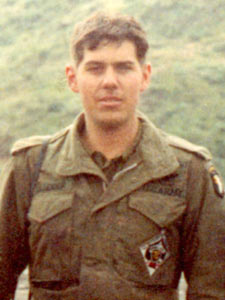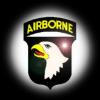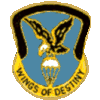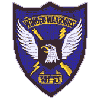| |
|
|
|
William Edward Dillender
Sergeant
B CO, 101ST AVN BN, 101ST AVN GROUP, 101ST ABN DIV, USARV Army of the United States Naples, Florida October 06, 1951 to March 20, 1971 WILLIAM E DILLENDER is on the Wall at Panel W4, Line 60 See the full profile or name rubbing for William Dillender |

  |

|



| |
|
Someone misses this man.
A memorial from one who wears his MIA bracelet, |
|
I served with Bill as a friend and fellow crew chief with the Kingsmen. I took the photo at Firebase Birmingham in January, 1971. I came home 17 days before he was shot down, and have thought about him every day since. Meeting his mother and niece at a Kingsmen reunion in Clarksville, TN in June, 2004, was an honor that I will never forget.
From a friend and comrade, 16 Feb 2006 The crash site in Laos has been found, along with remains of Bill and the other three crewmembers. They will be buried at Arlington National Cemetery on April 12, 2006. Thank you to all who made this possible. Welcome Home!
From a friend, |
|
Dear Sir,
From the daughter of an unrelated KIA, E-mail address is not available. |
BillWas my brother in arms in the Nam (Kingsmen, B Co. 101st Assault Helicopters, 101st Airborne Div.) and has been lost since the downing of their aircraft during Lam Son 719, 20 March 1971. I was a personal friend with the two enlisted guys, Bill and John, and talked a lot to Captain Dugan, because he was a homie from New Jersey. Major Barker was our Company Commander, and Captain Dugan was the AC on the slick, Bill was the CE and John the gunner. They gave their all while attempting to recover several downed aircraft crews from our Aviation Battalion in this area to include the pilot of the F-105, when they were hit with heavy machine gun (.51 cal) fire and a SAM, which took the tail boom off the aircraft, causing it to go inverted and explode. Due to continued heavy fire and SAMS in the area we were not able to continue recovery operations. This is the way I remember it, and I was there.
Welcome home, Kingsmen
From The Virtual Wall:
|
|
I never met Bill, but I spent four years of my life researching and sharing dialog with the pilots who flew this mission, as well as Earl Swift, the author of "Where They Lay". I married Major Jack Barker's niece 23 years ago, and as a 1972 Air Force Vietnam vet I had little hope that the crew of this aircraft would ever be recovered and returned home, either alive or deceased. Earl did an outstanding job in researching every detail of this mission, and those involved. It was through this book I was empowered to contact the pilots who flew with Bill and Jack Barker. Everyone was extremely helpful, but I found one man who I felt knew exactly where they lay. I feel that he was very important in the search because of info he provided to those searching for our loved ones. I am forever indebted to these men who offered up much of themselves in the search effort, and in offering their help in any way to grieving families such as ours. Bill proved that he was a very courageous young man by volunteering to make this sortie. He didn't have to do it, the Major only asked for volunteers because he knew how dangerous things had become trying to extract these entrapped ARVN troops. This is what makes heroes. To know what you are facing, what sort of devastation can be visited upon you at any moment, and still have the intestinal fortitude to make an honest effort to save the lives of those men trapped and in desperate need of help. Although I wish the mission had ended sucessfully, I am proud that men such as Bill were with Major Barker on March 20th 1971 when they all made the ultimate sacrifice in the name of freedom. Sleep well, my brother Bill, you are now in a place of honor, surrounded by your equals, never to be forgotten. I look forward to meeting you one day, in a far better place.
Most Respectfully |
A Note from The Virtual WallBeginning in January 1971, the South Vietnamese Army initiated a drive to cut NVA communications lines in Laos. The intent was to cut the Ho Chi Minh Trail, seize Tchepone (Laos) and return to Vietnam. The ARVN would provide and command the ground forces, while the US Army and Air Force would furnish aviation resources and supporting firepower.By early February the ARVN began its push into Laos. The NVA reacted fiercely, but the ARVN held its positions supported by U.S. airstrikes and resupply runs by Army helicopters. A helicopter assault on Tchepone was successful, with the abandoned village seized on March 6. Two weeks of hard combat were necessary for the ARVN task force to fight its way back to Vietnam. Towards the end of the removal, a helicopter from Company B, 101st Aviation Battalion was lost. Flown by Maj. Jack L. Barker, the Huey was attempting to land to extract ARVN troops about 20 miles west of Khe Sanh. During the attempt, the aircraft came under enemy fire and was seen to spin, explode, and catch fire, then to break up in the air. No signs of survivors were seen. Because of the presence of enemy forces in the area, no subsequent search could be made for survivors. Four men of B Company, 101st Aviation Battalion, died when their UH-1H Huey (tail number 66-16185) went down:
|
| Contact Us | © Copyright 1997-2019 www.VirtualWall.org, Ltd ®(TM) | Last update 08/15/2019. |